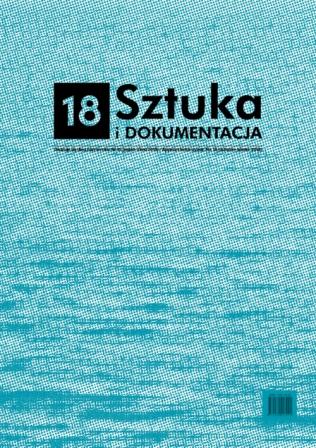Linia, czyli Co Łączy Nurty Awangardy Polskiej
The Line, or What Connects the Polish Avant-Garde Trends?
Author(s): Łukasz GuzekSubject(s): Sociology of Art
Published by: Akademia Sztuk Pięknych w Gdańsku
Keywords: Osieki; plein-air; geometrical abstraction; conceptual art; new media; Solidarity movement; performance studies
Summary/Abstract: The plein-airs in Osieki were organized in the years 1963-1981. On their basis, one can trace in a kind of laboratory form, the changing trajectories of world art and its influence onPolish art. Influencing both the artistic character and the dynamics of change. The study of art presented in Osieki indicates the leading processes taking place within Polish art. The sixties influenced by post-avant-garde art and the seventies subjected to the domination of conceptual art, and the following decline of these tendencies. The line – known as the leading slogan of the plein-air in the ground breaking year 1980, is a useful point of reference. I derive a broad interpretation of the line from the book by Wassily Kandinski Point and line to plane.Another, more parochial point of reference was a linear drawings by Wacław Szpakowski, discovered at that time by Janusz Zagrodzki.In the history of Polish art, conceptualism has its sources in geometric abstraction as well as in the art of photo-film media. Art of geometric provenance has always been present in Osieki. But it was not until 1980 and 1981 that conceptual art and the art of new media took a dominant position during the plein-airs. The '80 and '81 plein-airs were a kind of recapitulation of the artistic debates of the 1970s over conceptual art(and at the same time became a recapitulation of the plein-airs series). Their significance also lay in the fact that they took place in the context of a sharp conflict between the authorities and society, strikes in the Gdansk Shipyard and the influence of the Solidarity movement. The article is an attempt to reconstruct the artistic and political significance of the last two plein-airs. In the conclusion, I propose to use the methodology of performance studies to analyze this phenomenon. Consideration of these plein-airsin connection with three types of performances: organizational, cultural and technical, allows for them to be re-adjusted to contemporary cultural reflection.
Journal: Sztuka i Dokumentacja
- Issue Year: 2018
- Issue No: 18
- Page Range: 37-44
- Page Count: 8
- Language: English, Polish

